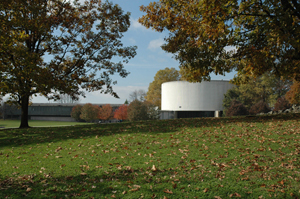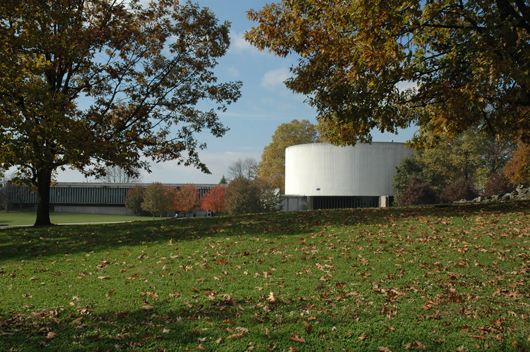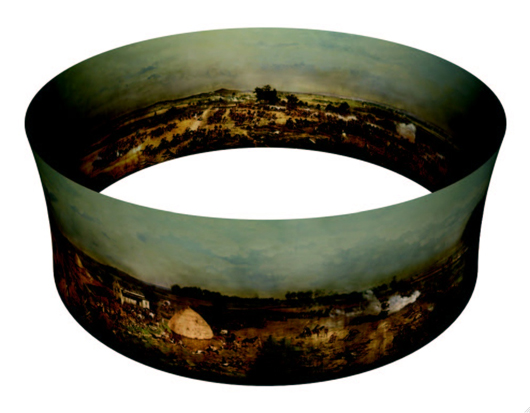
GETTYSBURG, Pa. (AP) – Fans of the Cyclorama building on the Gettysburg battlefield are awaiting a study on the building’s fate, but say they fear the end is already a foregone conclusion.
The National Park Service commissioned the study from a consulting company to determine what to do with the 47-year-old building, which once housed a 360-degree painting of Pickett’s charge that is now on display at the park visitors’ center and which has become the center of a struggle between military historians and preservationists and fans of modern architecture.
The review of alternatives is expected early next year, but backers of the building say they believe it is only being done because the courts ordered it following opposition to the planned demolition.
“I think this is all window dressing. The Park Service’s intention has always been to tear this building down. I don’t think that’s going to change now,” Dion Neutra, a California architect who helped his renowned father, Richard, design the building, told The (Hanover) Evening Sun.
Neutra said he once toyed with the idea of chaining himself to the building, but he’s now in his 80s and too old for such protests.
Some Civil War historians and preservationists have advocated demolition of the building, which closed in 2005, saying it blocks views necessary to teach the story of the Civil War battle of Gettysburg.
“The Cyclorama is literally just a huge view block between two very important parts of the (Union) line,” said Dan Rathert, a licensed battlefield guide. “That’s the biggest problem. With it there, it’s harder for people to understand how parts of the battlefield fit together.”
But architects hail the building as one of the flagships of the “Mission 66” program, launched in the 1950s by President Eisenhower to modernize national parks. It was one of five visitor centers built under the program, and famed architect Richard Neutra was contracted to design the structure, which opened with great fanfare in 1963 on the 100th anniversary of the battle.
Scholars say the building is an artifact of the historic program and one of the last remaining public structures designed by Neutra, considered one of the century’s most influential architects.
“You’ll never have another building that was actually touched by this architectural master,” said Christine Madrid French, who teaches architecture history at the University of Central Florida and wrote her master’s thesis on the Mission 66 buildings.
The National Park Service’s long-term plan for the battlefield unveiled in 1999 called for removal of the building, but Dion Neutra and others began to campaign to save the structure. A federal judge halted the plans, saying officials had not adequately considered alternatives. Federal officials argued in court documents that restoration of the battlefield and telling its story was a “historic mission of the highest order” and outweighed architectural preservation goals at the site.
The park service must now compile an environmental assessment to analyze the alternatives, as required under the National Environmental Policy Act, and with the aid of consulting firm Vanasse Hangen Brustlin Inc. is considering four options: leave the building as it is, repair and reuse it, move it, or demolish it.
Park spokeswoman Katie Lawhon said the National Park Service will release the study and the public we be invited to scrutinize the findings.
“When the study is published, we want everybody to take a very careful look at it,” she said. “We want people to see we’ve done a very rigorous job at looking at the alternatives, and the potential impacts and benefits to each.”
Some of the building’s fans express doubt that officials will be open to keeping the building, given the past decision to demolish the structure.
“They let the building sort of neglect,” said Jason Hart of CUBE design + research LLC, which works to save architecturally significant buildings. “It’s just been sitting there for a few years.”
In late 1999, the Cyclorama building was nominated to the National Historic Landmarks program. Three of the five flagship Mission 66 visitor centers have since been recognized as landmarks, but the Cyclorama building and another Neutra-designed center at Petrified Forest National Park in Arizona have not been accorded that status.
___
Information from: The Evening Sun, http://www.eveningsun.com
AP-WF-01-01-12 1830GMT
ADDITIONAL IMAGE OF NOTE




